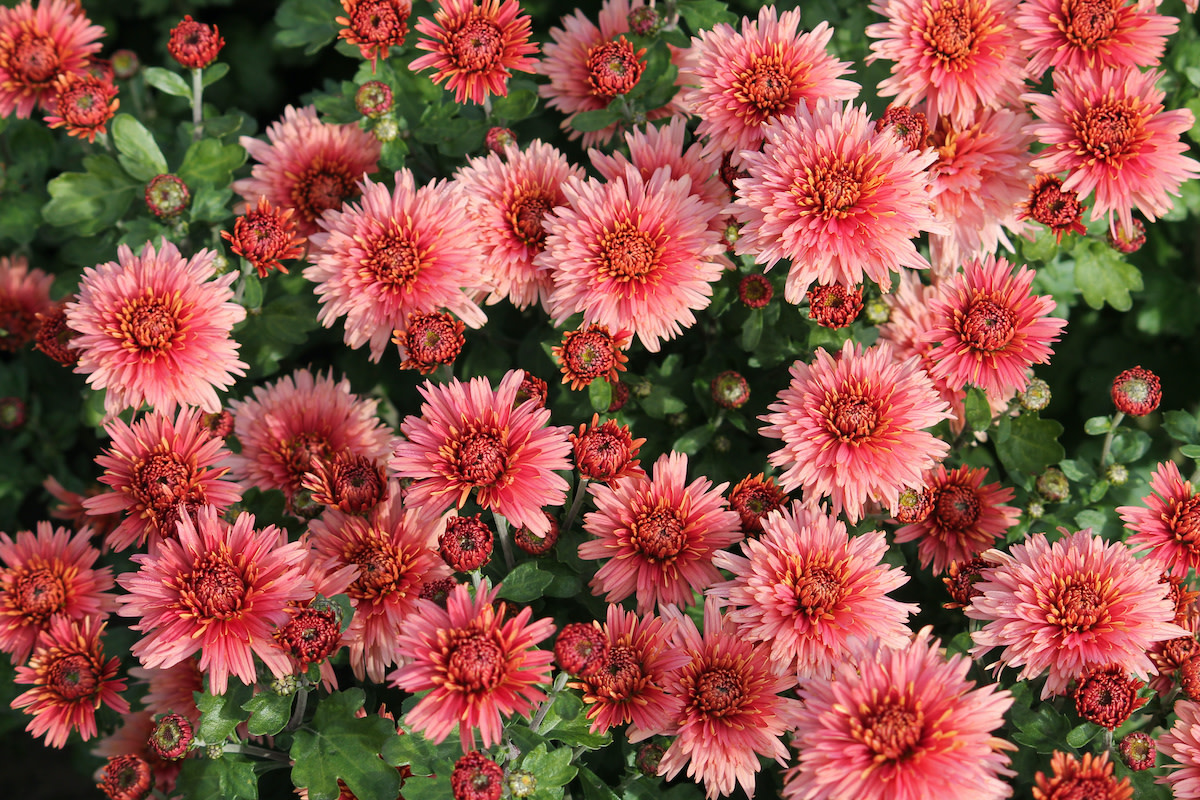11 Best Perennial Flowers to Plant in Your Garden
Written by MasterClass
Last updated: Jun 9, 2021 • 4 min read
Perennials bloom year after year, making them perfect for home flower gardens.
Learn From the Best
What Are Perennials?
Perennials are plants that return and blossom year after year. While annuals only offer one season of blooms, perennials establish themselves for years to come. As a result, perennials do not need to be replanted after the growing season ends. Many herbs and flowers are perennials.
The longer lifespan of perennials makes these plants easier on the home gardener. As long as you adhere to your perennials’ needs in regard to hardiness zones, watering, and sunlight exposure, you can have a successful garden of perennial flowers year after year with varied bloom times.
11 Best Perennials to Plant in Your Garden
These popular perennial flowers thrive in a wide range of hardiness zones, making them ideal for all types of flowerbeds.
- 1. Black-eyed Susan: Black-eyed Susans (Rudbeckia hirta) are bright yellow flowers with dark brown centers. These North American native plants are members of the sunflower family (Asteraceae) and usually reach peak bloom in the late summer, giving both gardens and fields a pop of color with their yellowy-orange petals. Black-eyed Susans are hardy wildflowers with a long growing season. This allows them to stay in bloom for weeks, attracting a wide variety of pollinators like butterflies, hummingbirds, and bees.
- 2. Mums: Chrysanthemums—also called “mums” or “chrysanths” for short—typically have large flower heads with a proliferation of petals, though there are also varieties of mums that are more daisy-like with smaller petals. Chrysanthemums usually have yellow, orange, purple, red, or white flowers. They are fall flowers, typically blooming in the late summer or fall. Some varieties are annuals while others are perennial plants, so make sure you’re getting a perennial variety before planting them in your garden.
- 3. Daylily: Daylilies (Hemerocallis) need full sun to part shade and well-draining soil to thrive. Typically, daylily flowers have three petals and three sepals—leaf-like petals that protect the flower buds. The blossoms can grow anywhere from three to 15 inches across and come in an extensive range of colors and fragrances. The flowers develop on scapes (flower stalks without leaves), and each scape can have anywhere from 12 to 15 flower buds on it. Some of these scapes can grow as high as six feet tall. With so many flower buds on each scape, daylilies make great cut flowers.
- 4. Sedum: Sedum, also known as stonecrop, is a fleshy-stemmed perennial plant with colorful, star-shaped flowers and succulent leaves. Sedum plants vary in size from three-inch-tall low-growers (ideal as ground cover) to three-foot-tall uprights (ideal for flower beds). Most sedum plants bloom red, yellow, or white flowers in late summer and fall. Their nectar attracts all types of pollinators, including hummingbirds.
- 5. Coneflower: Coneflowers are any of three genera of the daisy, aster, and sunflower family: Echinacea, Ratibida, and Rudbeckia. The name coneflower is a reference to the cone-shaped center, or disk, of the flower. Coneflowers are perfect for home gardens because they are heat- and drought-tolerant perennials that attract pollinators. With a bloom time of mid-summer to late summer and early fall, these heat-tolerant, daisy-like wildflowers do best in full sun and well-drained soil.
- 6. Peony: Peonies (Paeonia) are large, fluffy flowers with many petals. These highly fragrant flowers have been cultivated for almost 2,000 years, and they come in shades of red, pink, coral, white, and yellow. Like other perennials, peonies grow back in spring year after year, and some peony plants can live up to 50 years. Peonies can be grown as bushes, trees, or a hybrid of the two.
- 7. Yarrow: Yarrow (Achillea millefolium) plants are known for their clusters of small flowers that are tightly packed and look similar to small bouquets. These plants come in a variety of bright colors and do best in dry conditions, making them a great fit for a rock garden or other perennial gardens with minimal moisture. Moisture and shade can cause their stems to wilt.
- 8. Catmint: Catmint (Nepeta racemosa) is an herb that’s similar in appearance to lavender due in part to its blue flowers and shrub-like shape. Since its bloom time runs from early spring to early fall, you’ll have plenty of time to harvest and dry this spicy scented flower for homemade potpourri.
- 9. Sage: Sage is a low-maintenance, hardy perennial herb known for its fuzzy leaves and intense herbal aroma. There are many varieties of sage, but common sage—aka garden sage, broadleaf sage, or culinary sage (botanical name: Salvia officinalis)—is the variety you'll likely want to plant in your herb garden. Russian sage (Salvia yangii), while very different from common sage, is similarly low-maintenance and long-blooming; these shrubs start blooming bright lavender flowers in the late spring or early summer.
- 10. Dianthus: Dianthus flowers are also known as “pinks” due to their frilled petals that look like they have been cut with pinking shears. Dianthus are usually perennial, though some types are annual or biennial, and they attract butterflies, hummingbirds, and pollinating insects. Dianthus flowers come in a variety of shapes and sizes, with some standing three feet in height and others spreading low across the ground.
- 11. Hardy hibiscus: Hardy hibiscus (Hibiscus moscheutos), also known as swamp rose mallow, is a cold-hardy, wetland plant that is found naturally in swamps, marshes, or the moist areas around rivers and ponds. Their flower blossoms can be as small as four inches and grow to be wider than 10 inches, with the entire plant growing between two and 10 feet tall.
Learn More
Grow your own garden with Ron Finley, the self-described "Gangster Gardener." Get the MasterClass Annual Membership and learn how to cultivate fresh herbs and vegetables, keep your house plants alive, and use compost to make your community—and the world—a better place.
